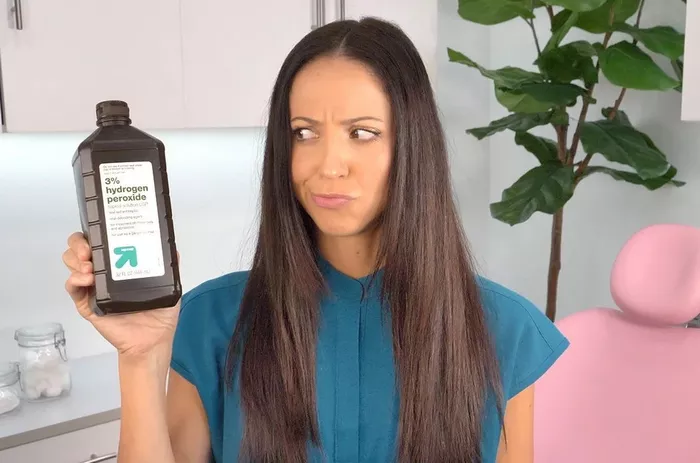Teeth whitening has become one of the most popular cosmetic dental procedures worldwide. A bright, white smile is often associated with health, youth, and attractiveness. Among the various teeth whitening agents available, hydrogen peroxide stands out as the most widely used and effective chemical. However, knowing the safe strength hydrogen peroxide for whitening teeth is crucial to ensure effective results without causing harm to the teeth or gums.
What Is Hydrogen Peroxide and How Does It Whiten Teeth?
Hydrogen peroxide (H2O2) is a clear, colorless liquid commonly used as a bleaching agent. It works by breaking down into oxygen and water, releasing free radicals that penetrate the enamel and dentin to oxidize stain molecules. This process effectively lightens the color of the teeth.
Chemical Action on Teeth
The oxygen radicals released during the breakdown of hydrogen peroxide react with pigmented molecules in the tooth structure, fragmenting them into smaller, less pigmented pieces. This results in a visibly lighter tooth color.
Forms of Hydrogen Peroxide Used in Whitening
Hydrogen peroxide is found in several forms for teeth whitening:
Professional whitening gels: Higher concentrations applied by dentists.
At-home whitening kits: Lower concentrations for consumer use.
Whitening toothpaste and rinses: Very low concentrations for daily use.
Safe Hydrogen Peroxide Concentrations for Teeth Whitening
The safety of hydrogen peroxide depends mainly on its concentration and how it is applied. Both the American Dental Association (ADA) and regulatory bodies worldwide have established guidelines to ensure patient safety.
Professional In-Office Whitening
Dentists typically use hydrogen peroxide concentrations ranging from 25% to 40% for in-office whitening treatments. These treatments involve controlled application and protective measures such as gum barriers and suction. Because of the higher strength, they provide rapid and dramatic whitening results but require professional supervision.
At-Home Whitening Products
For over-the-counter (OTC) or dentist-prescribed at-home whitening kits, hydrogen peroxide concentrations usually range between 3% and 10%. These concentrations are deemed safe for unsupervised use when following instructions carefully, although results take longer to achieve than professional treatments.
Whitening Toothpastes and Rinses
Whitening toothpastes and mouth rinses contain very low hydrogen peroxide concentrations, typically less than 1%. These products help maintain whiteness but have limited whitening ability on deep stains.
Regulatory Guidelines and Recommendations
Regulatory agencies such as the U.S. Food and Drug Administration (FDA) and the European Union set limits on permissible hydrogen peroxide concentrations in teeth whitening products.
FDA Regulations
The FDA regulates teeth whitening products as cosmetics or medical devices depending on their concentration and claims. Products with hydrogen peroxide concentrations above 10% usually require professional supervision.
European Union Regulations
The EU restricts OTC whitening products to contain no more than 6% hydrogen peroxide. Products with higher concentrations must be applied by or under the supervision of a dental professional.
Factors Influencing Safe Usage of Hydrogen Peroxide
Besides concentration, several factors affect the safety and effectiveness of hydrogen peroxide in teeth whitening.
Application Time and Frequency
Longer contact time and frequent applications increase the risk of side effects such as tooth sensitivity and gum irritation. Safe usage protocols recommend limited daily exposure and rest periods.
Oral Health Condition
Patients with existing dental problems such as gum disease, cavities, or enamel erosion should consult a dentist before whitening to avoid aggravating their conditions.
pH and Formulation
The pH level and additional ingredients in whitening products can affect hydrogen peroxide’s safety. Neutral or slightly alkaline products tend to be gentler on teeth.
Potential Risks and Side Effects of Hydrogen Peroxide Whitening
Despite its efficacy, improper use of hydrogen peroxide for teeth whitening can cause adverse effects.
Tooth Sensitivity
Hydrogen peroxide can temporarily increase tooth sensitivity by penetrating the enamel and affecting the nerve endings in the dentin. Sensitivity usually resolves after treatment completion but can be uncomfortable.
Gum Irritation
Contact of hydrogen peroxide with gums may cause irritation, redness, and inflammation. This is especially common with higher concentrations or improper application.
Enamel Damage
Excessive or prolonged use of high-concentration hydrogen peroxide can weaken enamel, increasing the risk of erosion and decay over time.
How to Choose a Safe Hydrogen Peroxide Whitening Product
Choosing the right whitening product involves balancing efficacy and safety.
Consult a Dental Professional
The safest approach is to consult a dentist who can recommend a whitening plan tailored to your dental health and aesthetic goals.
Check Product Labels
Verify the hydrogen peroxide concentration on product packaging. Avoid unregulated or imported products with unknown concentrations.
Follow Instructions Carefully
Strictly adhere to application times and frequency. Never exceed recommended usage to avoid side effects.
Alternative Whitening Agents and Their Safety
Besides hydrogen peroxide, carbamide peroxide is commonly used in whitening products. It breaks down into hydrogen peroxide and urea, releasing hydrogen peroxide slowly and is often considered gentler on teeth.
Carbamide Peroxide Concentrations
Typical at-home whitening kits contain 10-35% carbamide peroxide, equivalent to approximately 3-12% hydrogen peroxide.
Other Whitening Methods
Non-peroxide whitening agents such as activated charcoal or abrasive toothpastes exist but lack strong clinical evidence and may risk enamel abrasion.
Summary
Hydrogen peroxide is an effective and commonly used agent for teeth whitening, but its safety depends on using the correct concentration and following application guidelines. For professional in-office treatments, concentrations between 25% to 40% are used under strict supervision. For at-home whitening, concentrations between 3% and 10% are considered safe when used as directed. Products containing less than 1% hydrogen peroxide are generally safe for daily use in toothpastes and rinses.
To ensure the best and safest results, consulting with a dental professional before starting any whitening regimen is highly recommended. Proper use minimizes risks such as sensitivity, gum irritation, and enamel damage, enabling you to enjoy a brighter smile safely.
Related topics

